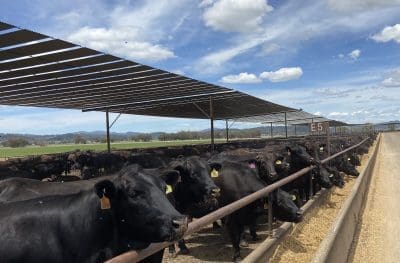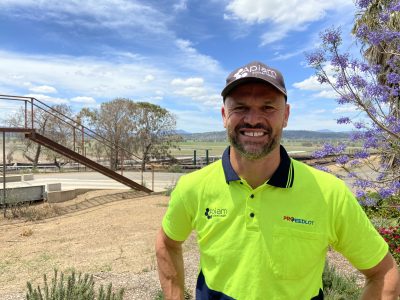
A SERIES of site-specific vaccines for feedlots are being developed to help make inoculation viable and effective for one of the industry’s biggest health issues, Bovine Respiratory Disease (BRD).
The autogenous vaccines are helping fill a major void in the industry, with pharmaceutical companies struggling to make the regular synthetic vaccines for some pathogens viable.
Dr Tony Batterham from Apiam Animal Health has been overseeing the company’s feedlot vaccination programs, which now has approvals for Pasturella and Histophilus immunisations from the Australian Pesticides and Veterinary Medicines Authority.
“We have been well served by pharmaceutical companies who have developed, commercialised and supplied vaccines to the industry,” Dr Batterham said.
“But it is extremely costly for them to go through all of the regulatory requirements to gain APVMA approval for a synthetic or mass produced vaccine that can be used industry-wide.
“They are motivated to develop and produce these products but with a market of 1 million head in the lotfeeding industry, there may not be the required return on investment.”

Dr Tony Batterham
Working with some of Australia’s largest lotfeeders, Dr Batterham and his team have been developing autogenous vaccines – which means they can only be used on the sites where the samples are taken to make the vaccine.
“We’re just trying to fill the void and give companies access to vaccines that were not available for all of these recognisable reasons,” he said.
“Currently we have Pasturella and Histophilus vaccines in our portfolio, but we have many more applications under review.”
Permits still hard to obtain
While the autogenous vaccines cost less to develop and are approved in a shorter time-frame than the synthetic vaccines, Dr Batterham said it was still a major process.
“It is a restricted permit but it doesn’t mean it is easy to pass through approvals, it’s still a protracted process and needs to meet very rigid criteria,” he said.
“We need to test the safety of the vaccines before going into large scale use. There’s a lot of quality control measures in the lab and we need to do a safety assessment in a small cohort of animals before it goes up for large scale use.”
Dr Batterham said the company had been using full genome sequencing techniques to determine the strain of bacteria used in the vaccine. He said this approach should enhance the efficacy of the vaccine.
“Bacteria strains will differ from site-to-site, which gives us an incentive to also design and customise these vaccines site-by-site,” he said.
“It is a breach of permit to use one feedlot’s vaccine on another feedlot site, but in any case, we think it would be smarter to do the necessary surveillance and customise these vaccines as it’s a more targeted approach.”
Development the vaccines is part of a recent push from the industry step up its efforts in the management of BRD.
With funding from Meat & Livestock Australia, Dr Batterham has recently investigated more accurately diagnosing the disease on the day-to-day run through the pens.
He said reducing the risk of antimicrobial resistance is a major goal and development of preventative measures complements the development of improved diagnostic methods.
“We are very interested in the science of this and we are interested in being able to manage BRD without antibiotics,” he said.
